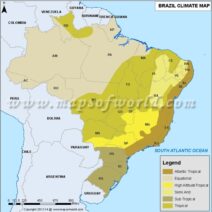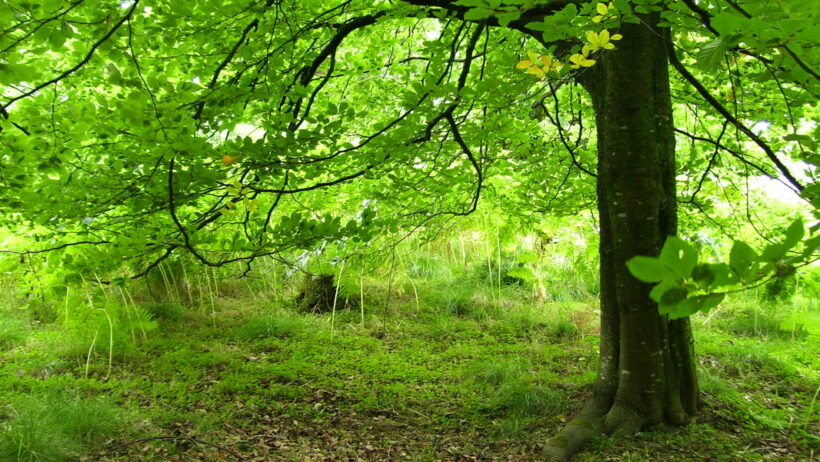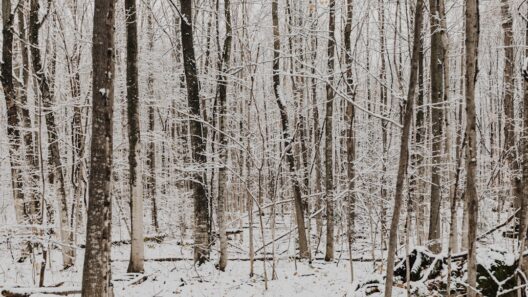As one traverses the landscapes of temperate deciduous forests, an undeniable feeling of wonder often pervades the atmosphere. The striking transformations that occur throughout the year within these ecosystems draw individuals into their embrace. The climate of temperate deciduous forests is deeply intertwined with the seasons, each fostering unique ecological dynamics and influences that underscore the intricate balance of life within this biome.
The temperate deciduous forest biome is primarily located in the humid continental climates of North America, Europe, and parts of Asia. Characterized by well-defined seasons, these forests experience a broad climatic range that includes significant temperature fluctuations and a diverse array of precipitation patterns. The climate is predominantly characterized by warm summers and cool winters, leading to an annual cycle of vegetative growth that is specifically adapted to these seasonal variations.
During spring, as temperatures begin to rise and the frost of winter dissipates, the forest awakens from its dormancy. This season is characterized by a resurgence of life; trees such as oaks, maples, and beeches begin to bud and produce vibrant green foliage. The abundance of chlorophyll not only enhances the aesthetic appeal of the forest but also maximizes photosynthetic activity, essential for the growth of plants and the production of oxygen. The increase in temperatures and lengthened daylight hours stimulate a variety of fauna to emerge from winter hibernation or migrate back to these habitats. This awakening of life in the spring can be described as a time of rebirth, a phenomenon that resonates deeply with human observers, symbolizing renewal and the cyclical nature of life.
Summer, in stark contrast to spring, envelops the forest in warmth and vibrancy. With temperatures often exceeding 80°F (27°C) and humidity rising, the forest becomes a lush and thriving ecosystem. The tree canopy closes in, offering a rich habitat for diverse wildlife, including birds, mammals, and insects. The understory bursts forth with an array of wildflowers, shrubs, and saplings, creating a biodiverse environment teeming with life. The interplay of sunlight filtering through the leaves casts enchanting shadows on the forest floor, a spectacle that captivates hikers and nature enthusiasts alike. This season not only serves as a crucial time for growth and reproduction among plant and animal species, but it also plays a vital role in the carbon cycle, as trees absorb significant amounts of carbon dioxide — a factor critical in sifting through the ongoing concerns of climate change.
As summer gives way to autumn, the forest undergoes yet another magnificent transformation. Temperatures begin to cool, and the chlorophyll production ceases in preparation for the winter months. The resulting display of rich hues — fiery reds, bright oranges, and deep yellows — captivates observers, painting a breathtaking tableau across the landscape. This phenomenon, known as autumn foliage, draws millions of visitors annually, underscoring a cultural appreciation for the beauty of nature’s cycles. However, beneath the surface of these vibrant colors lies a complex process of preparation for the harsher winter ahead. Trees enter a state of dormancy, conserving energy and resources for the months to come. The fallen leaves contribute organic matter to the soil, enhancing its fertility, which is pivotal for the growth of future generations of plants.
Winter arrives with a stark contrast to the life-filled vibrancy of spring and summer. As temperatures plunge, often dipping to below freezing, the forest is cloaked in a blanket of snow or ice. This season poses significant challenges for many forest inhabitants. Some species engage in hibernation, while others migrate to escape the harsh conditions. The trees stand bare, their intricate branch structures outlined against the winter sky, presenting a haunting beauty that invites contemplation. The stillness of the forest during this time offers a unique perspective on the resilience of life. Underneath the snow, the soil remains alive, with microorganisms continuing their fundamental roles in nutrient cycling despite the apparent desolation above. The winter serves as a necessary period of rest, crucial for the rejuvenation that spring will inevitably bring.
This cyclical nature of the temperate deciduous forest climate evokes a sense of both fascination and acknowledgment of life’s transience. Each season encapsulates a unique chapter in the story of the forest, showcasing the dynamic interactions between climate, flora, and fauna. Observing these changes provides insight not only into the ecological processes at play but also into broader conversations regarding environmental stewardship and climate change.
As human activities continue to affect global climates, understanding and appreciating the delicate balance within temperate deciduous forests is of paramount importance. Climate change poses a significant threat to the intricate webs of life within these ecosystems. Fluctuations in temperature and altered precipitation patterns can disrupt the synchronous flowering and breeding cycles of various species, leading to profound ramifications for biodiversity. Vigilance in monitoring these changes and advocating for a sustainable future is crucial. Protecting temperate deciduous forests will ensure the continuation of their remarkable seasonal cycles and their role as vital environmental assets.
In conclusion, the temperate deciduous forest is not merely a backdrop for picturesque landscapes, but a realm of complexity and resilience defined by its climate and seasonal changes. Through understanding the significance of each season, we come to appreciate the deeper connections within our environment. The unique characteristics of this ecosystem beckon us to engage more thoughtfully with nature and recognize our responsibility in nurturing and preserving its delicate balance for generations to come.








